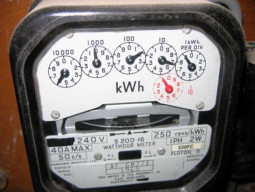
History is repeating itself as it always does. With the ongoing economic and strategic rivalry between the two economic juggernauts, the US and China, there is a constant threat that the Thucydides trap will revive again. It has been the custom of world politics that whenever an emerging power has threatened the status of an established hegemon, war becomes inevitable. After the fall of the Berlin Wall in 1989, the US emerged as a hyperpower with no contestant in the global arena because of its dominance in the military, economic, cultural and political realms. The height of American hubris became prominent when it took unilateral action to invade Iraq. As Francis Fukuyama would put it, “This degree of unipolarity in this period has been relatively rare in history.”
With such enormous power at hand, the US gave the world an ingredient of liberalisation. Both political and economic liberalisation were encouraged and promoted through the newly founded WTO. The Bretton Woods System came into play to inculcate both political and economic liberal values in the decolonised world and in the 15 disintegrated states that once formed the USSR. It was a momentous period in the history of mankind, as it seemed that the world was liberated from a patron-client relationship and the path towards egalitarianism looked clear.
To help a weak and impoverished China that had aligned itself with the US against the USSR for over a decade in the Cold War, the US opted for the policy of engagement and liberalisation. The motive was to make China (which had recently embraced economic reforms under a communist regime) a peace-loving democracy and a responsible stakeholder in the US-led international order. Beguiled by the misguided triumph of liberalism and the obsolescence of multipolarity, policymakers at Capitol Hill promoted Western investment in China and helped it in becoming a part of the global financial structure. They had ignored the ominous signs that a country with nearly five times as many citizens as the US, under an authoritarian regime equipped with economic liberalization, could pose serious implications for the status quo of the US-led world order.
China rose as was expected. And current changes in global politics, geo-strategies, and geo-economics confirm that the US has a new contender for supremacy in the form of China. This year, China’s current-dollar GDP will be around 75% of that of the US, and by 2026 it will be 89%. It is predicted to surpass the US economy by the early 2030s. That is because of two reasons. First, the federal debt of America will reach nearly 110% of its GDP, higher than what it reached previously in WWII. Second, the negative net international investment position (NIIP) of the US is currently at 70% of its GDP. These factors shadow the future global hegemonic status of the US. China has a population of 1.4 billion, as compared to the 330 million of the US; and the citizens of China just need to achieve half of what the average American is earning to double their economic size. The duo of population with economic reforms has enabled China to become an economic juggernaut.
According to Francis Fukuyama, the three essential factors that have enabled the economic rise of China under a communist regime are effective leadership, social trust, and the efficiency of the state apparatus. Furthermore, China has also been engaging with regional and global allies by offering them investments and infrastructure through President Xi’s vision of the Belt and Road Initiative (BRI). After the Afghanistan episode, the hyphenated US approach towards India to help it contain China’s rise has become a concern for Pakistan since it could affect regional peace. The US has taken concrete steps to bolster its cooperation through military agreements and partnerships like LEMOA, COMCASA, BECA, and the newly formed AUKUS, under which the US would provide military assistance and cutting-edge technology to its strategic partners.
To counter the emerging threat in its backyard, China has also started to opt for an offensive policy. It has increased its muscular approach in asserting territorial claims on the Senkaku Islands, Spratly Islands, and Taiwan. China is moving ahead with its investments through BRI across Africa, the Middle East, and South Asia. A $400 billion deal has also been signed with Iran.
Amid the changing winds, Pakistan has shifted its foreign policy paradigm from geo-strategic to geo-economic and has opened its doors to other stakeholders in the global arena. It has also shifted its hyphenated approach from the US after several incidents including the Raymond Davis episode, the Salala incident, and the OBL operation, all of which threatened its sovereignty. But the ‘do more’ rhetoric gave impetus to change more than anything else. The security agreements of the US with India — LEMOA, COMCASA, and BECA — and containment of Pakistan in the FATF’s grey list have exacerbated problems for Pakistan.
History has proved that it repeats its cycle, keeping the course of action the same. Just as China has threatened the established status of the US hegemony, Spartans did the same to the established power of Athens in early 4th century BC. It has also become evident that the liberalisation fantasy of the US intelligentsia did not go as planned. Instead, the engagement policy that was once put into action to foster harmony between Beijing and Washington post-Cold War has now resulted in the revival of Cold War 2.0 and the Thucydides trap. But is this the way forward for a more peaceful world?
If the world does not take a sensible action in due time, and multipolarity with absolute gains is not preferred over unipolarity, the aftermath would be a pyrrhic victory. But at what cost?
Historically, Pakistan has maintained good relations with both economic giants. As rational logic would suggest, instead of swaying into picking sides Pakistan should opt for a cautious de-hyphenated approach. Engaging both countries is essential as the US is still the largest export market for Pakistani goods, an education destination for the Pakistani elite, and most importantly one of the main actors in the Afghanistan fiasco. In contrast, China is helping in other matters such as internationalising the IIOJK cause and helping it in the UNSC. China has also become Pakistan’s major economic partner after an unprecedented $62 billion economic cooperation via CPEC.
Pakistan can play the role of a ‘neutral actor’ as it did in the Nixon era when it facilitated US-China rapprochement. If Pakistan can be a melting pot of converging US and Chinese interests to promote regional prosperity and world peace vis-à-vis Afghanistan, then it can surely attain security and economic benefits while having both beneficial partnerships.
Published in The Express Tribune, November 23rd, 2021.
Like Opinion & Editorial on Facebook, follow @ETOpEd on Twitter to receive all updates on all our daily pieces.




















COMMENTS
Comments are moderated and generally will be posted if they are on-topic and not abusive.
For more information, please see our Comments FAQ